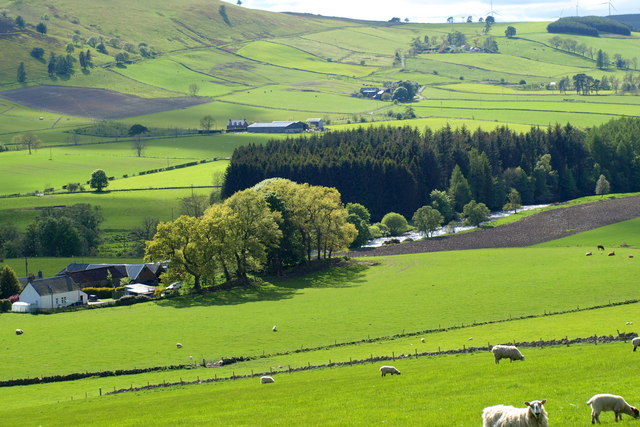By Lottie Jacob and Jeremy Burchardt
The countryside has long been a place intrinsic to the British national identity, from the Romantic movement through to the present day. And yet, it has remained largely inaccessible to people of colour, both literally in rural landscapes – for example, walking – and in the representation of the countryside. The title of this post comes from artist Ingrid Pollard’s 1988 series ‘Pastoral Interlude’, and demonstrates the crucial need to understand the structures and processes that create and replicate both the underrepresentation of people of colour, and the barriers that prevent their access.
Wild in the City – a London-based non-profit supporting the well-being of people of colour through widening their relationship with nature – highlight some of the key barriers facing people of colour to the countryside, largely stemming from intergenerational trauma due to historic racism, and feeling out of place due to the lack of other people of colour. Fearing racism in the countryside is, unfortunately, not unfounded: Jay Rayner found that, in 2001, the proportion of people of colour who had been the victim of a racist crime was significantly heightened in rural areas, where the populations remained majority white. With the threat of hostility and the alien landscape, for many the countryside shrinks further away from reach.
This raises the challenging and complicated issues of what it means to ‘belong’, alongside what heritage and localism means. The myth of the English rural idyll, the celebrated notion of a peaceful and ‘natural’ countryside, is problematic; it obscures the realities of rural England to create the false image as a place of prosperity and having a lack of conflict, which is particularly troubling when related to the experiences of people of colour. In failing to recognise the hostility faced, and by perpetuating a false image of rural England, the landscape of the countryside is further closed to people of colour.
Landscape should be equally open to all, whether or not they identify with the historic residents and landowners of that area. But how can this be done in practice? Do we need to free landscape from the ‘dead hand of the past’, so that we can open it up and democratize it for the present and the future? And how can this be done without jettisoning the many layerings of the past and of memories that do so much to endow landscape with meaning?
So, what is being done? With the vital work of organisations such as Wild in the City and the Sheffield Environmental Movement, people of colour are guided to explore local green space, learning about wildlife identification and natural history, to become more immersed in the landscape. At an institutional level, the recent release of the ‘Interim Report on the Connections between Colonialism and Properties’ by the National Trust, exploring the links between their properties and colonialism, has sparked massive discussion regarding the heritage of England and how it often fails people of colour. The ongoing collaboration of the Colonial Countryside Project between the National Trust, the University of Leicester, Peepal Tree press, and local schools to explore country houses’ Caribbean and East India Company connections works towards incorporating the youth and people of colour in exploring the colonial past of Britain, so often overlooked in the curriculum.
Here at Reading, we have various initiatives working towards a more inclusive understanding of the countryside. The AHRC Network Changing Landscapes, Changing Lives utilises a biographical and narrative approach to improve landscape decision making, which greatly increases the scope of voices able to contribute to the understanding of landscape. A particular focus in the context of the UK is the ways in which landscapes, especially rural landscapes, can be constructed as ‘white spaces’ that exclude ethnic minorities [1], an issue recently highlighted by MK Gallery’s ‘The Lie of the Land’ exhibition and ongoingly by the Wild in the City initiative. The second symposium, ‘Whose Landscapes?’ – postponed due to COVID-19 – will also explore conflicting landscape identities [2] and the synergies and divergences between personal, local and national landscape identities [3]. In conjunction with the symposium, an intervention by Ingrid Pollard, whose work interrogates race and rurality, take place in conjunction with the Museum of English Rural Life (MERL), connecting to MERL’s major initiative attempting to decolonise its collections.
This work merely scratches the surface of the colossal project necessary to opening up the English countryside to a more diverse range of people. Not only must we continue to challenge the myth of the rural idyll and research and educate ourselves to the historic role of people of colour in the countryside, it is also essential to offer our support – whether financial, expertise or time – to local organisations working to widen participation in the countryside. After all, it can only truly be a Green and Pleasant land when it becomes an equal one.
[1] Sarah Neal and Julian Agyeman (eds), The New Countryside? Ethnicity, nation and exclusion in Contemporary Rural Britain (Bristol, 2006).
[2] Loupa Ramos, 2016
[3] Paul Readman, Storied Ground: Landscape and the Shaping of English National Identity (Cambridge, 2018).


1 comments on “‘A visit to the countryside is always accompanied by a feeling of unease; dread.’”